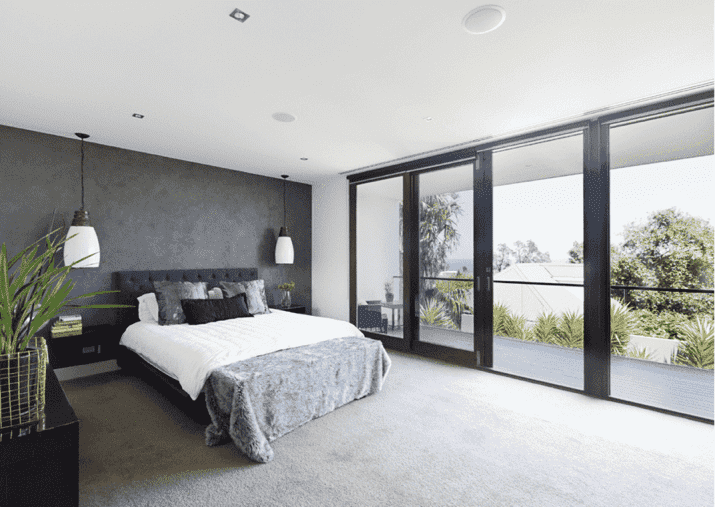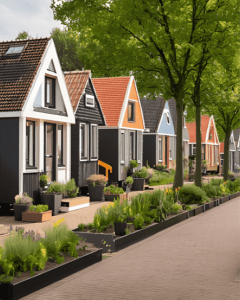Build-to-Rent Revolutionizes Australia's Rental Market
The Build-to-Rent (BTR) wave in Australia is shaking up the rental market with new landlords constructing entire apartment communities. These buildings cater to renters with bond-free leases, long-term tenure, and luxurious amenities, fostering a dynamic lifestyle and community.
In a bid to shake up Australia's rental market, a surge of new landlords is undertaking the construction of entire apartment communities. These landlords are offering attractive incentives such as bond-free leases, long-term tenure, and lavish amenities. Termed the Build-to-Rent (BTR) wave, these apartment buildings primarily cater to renters rather than homebuyers, with a strong focus on fostering a dynamic lifestyle and community to encourage long-term tenancy.
With a variety of BTR brands emerging, renters can now opt for different levels of services and amenities based on their budget. One of the most notable changes brought about by BTR is the introduction of bond-free leases. Mirvac's LIV apartments, for instance, offer this game-changing feature, enabling renters to skip the traditional bond process. LIV boasts two fully operational complexes—the LIV Indigo complex at Sydney Olympic Park, comprising 315 apartments and nearly fully occupied, and the LIV Munro building at Melbourne CBD's Queen Victoria Market, with 490 units, 70% of which are leased.
The BTR sector aims to bridge the gap between buying and renting in Australia's property market, providing a viable option for those who cannot or choose not to invest in homeownership. Mirvac alone has approximately $1 billion worth of BTR properties currently under construction nationwide, including two more complexes in Melbourne and its inaugural complex in Brisbane.
Aside from bond-free leases, BTR offers numerous benefits to renters. Flexible lease arrangements with extended terms provide added convenience, empowering individuals to personalize their living spaces. Moreover, BTR properties often implement proactive maintenance programs, allowing renters to enjoy hassle-free living. Many of these communities embrace pet-friendly policies and even offer the option to swap units within the same building. Additionally, BTR brands go the extra mile with amenities such as gyms, pools, yoga rooms, and other health and wellness facilities. Communal spaces designed for living, working, and socializing further enhance the residents' experience, featuring shared outdoor areas, BBQ spots, cinemas, and coworking spaces. A dedicated management team oversees these complexes, offering a range of services including concierge assistance, optional cleaning services, and coordinated community events.
Realm BTR, managed by Essence Communities, emphasizes the importance of building a genuine sense of community among neighbors. By organizing events, social calendars, and special interest groups tailored to residents' preferences, Realm BTR ensures that its buildings are purposefully designed to accommodate renters seeking a progressive lifestyle. Other notable BTR brands operating in Australia include Home, Indi, Local, Greystar, Sentinel, and more.
To understand how Build-to-Rent works, it's imperative to grasp the underlying concept. Unlike traditional apartment developments, developers who opt for the BTR model retain ownership of all apartments in the building upon completion instead of selling them to individual investors. Alternatively, developers may construct these apartment buildings on behalf of institutional investors, like superannuation funds, who hold onto the properties and rent them out to tenants. With estimates indicating that around 50,000 BTR apartments will be built in Australia by 2030, Colliers recognizes the potential for BTR to expand into other forms of housing, further bolstering the supply pipeline.
The rise of BTR comes at a pivotal moment for Australia's rental crisis. The national rental vacancy rate plummeted to a record low of 1.06% in September, exacerbating the challenges faced by renters across the country. With declining vacancy rates in both capital and regional areas, the rental market has become fiercely competitive, driving up prices and placing immense strain on tenants.
Advocates applaud the BTR sector for its potential to alleviate the rental market's dire housing shortage. However, Colliers cautions that by 2030, BTR will only account for roughly 1% of Australia's total rental supply. Nevertheless, Colliers' National Director of Build-to-Rent, Robert Papaleo, believes that the sector will play a vital role in the creation of homes when traditional property investors falter. Typically, private investors focus on rental properties during booming economic periods and withdraw during downturns. Consequently, property industry groups actively seek to attract institutional investors, who can provide stability and long-term investment in Australia's rental market.
Housing affordability remains a significant concern within the BTR sector, as many BTR homes currently charge rents above the market average. However, BTR brands are exploring solutions to address affordability, such as offering subsidized and affordable homes within their buildings. For instance, the Queensland government subsidized Mirvac's LIV brand to include 99 'affordable' apartments within the 396-home LIV Anura building in Brisbane. These apartments are exclusively reserved for essential workers, with rents set at a 25% discount to market rates.
As the demand for rental properties continues to grow, the Build-to-Rent revolution is poised to reshape Australia's rental market. With increased supply and an emphasis on community-building, BTR communities offer renters a lifestyle that rivals traditional homeownership. While challenges surrounding housing affordability persist, the BTR sector's efforts to address this issue and deliver much-needed housing options are commendable.
Build-to-Rent Revolutionizes Australia\'s Rental Market
Greece Real Estate Market: Residential Slowdown Ahead
Experts predict a slowdown in Greece's residential real estate market, with house price growth expected to decelerate in the coming months and years.
Experts predict a slowdown in Greece\'s residential real estate market, with house price growth expected to decelerate in the coming months and years.
Read morePortugal Real Estate Market: Luxury Trends for 2024
Explore the 2024 trends in Portugal's luxury real estate market, a prime destination for investors and buyers seeking exceptional opportunities.
Explore the 2024 trends in Portugal\'s luxury real estate market, a prime destination for investors and buyers seeking exceptional opportunities.
Read moreFrench Property Market: Recovery Signs Amidst Challenges
Discover six key insights from notaire data on the French property market's recovery post-Covid, despite ongoing low sales and prices.
Discover six key insights from notaire data on the French property market\'s recovery post-Covid, despite ongoing low sales and prices.
Read moreMetaWealth’s $1.5M Digital Funding for Athens Real Estate
MetaWealth seeks to raise $1.5M in Greece through digital currency to develop a residential building, utilizing blockchain for secure financing.
MetaWealth seeks to raise $1.5M in Greece through digital currency to develop a residential building, utilizing blockchain for secure financing.
Read moreLisbon Apartments: Europe’s Most Affordable Rentals
Explore why Lisbon apartments are the cheapest in Europe, as rents rise 4.3% across the continent, according to the HousingAnywhere Index.
Explore why Lisbon apartments are the cheapest in Europe, as rents rise 4.3% across the continent, according to the HousingAnywhere Index.
Read moreReal Estate Facts: Tiny Homes Trend in the Netherlands
The Netherlands sees a rise in homes under 50 sqm, including "flex homes." Yet, many citizens still prefer larger living spaces, warns Netherlands Environmental Assessment Agency (PBL).
The Netherlands sees a rise in homes under 50 sqm, including "flex homes." Yet, many citizens still prefer larger living spaces, warns Netherlands Environmental Assessment Agency (PBL).
Read moreAustralia real estate market: Sydney Home Prices Dip Amid Affordability Concerns
Explore the October trends in the Australia real estate market as Sydney home prices decline for the first time in nearly two years.
Explore the October trends in the Australia real estate market as Sydney home prices decline for the first time in nearly two years.
Read moreFrance’s Real Estate Market: Home Prices Decline Slows in 2024
New notaire data reveals a slowing decline in house prices across France, with a -0.6% drop in early 2024, signaling potential market stabilization.
New notaire data reveals a slowing decline in house prices across France, with a -0.6% drop in early 2024, signaling potential market stabilization.
Read moreNew Zealand Housing Market Needs Summer Surge for Recovery
ANZ Bank warns that New Zealand's stagnant housing market requires a summer sales boost to clear listings and support price recovery by 2025.
ANZ Bank warns that New Zealand\'s stagnant housing market requires a summer sales boost to clear listings and support price recovery by 2025.
Read more














